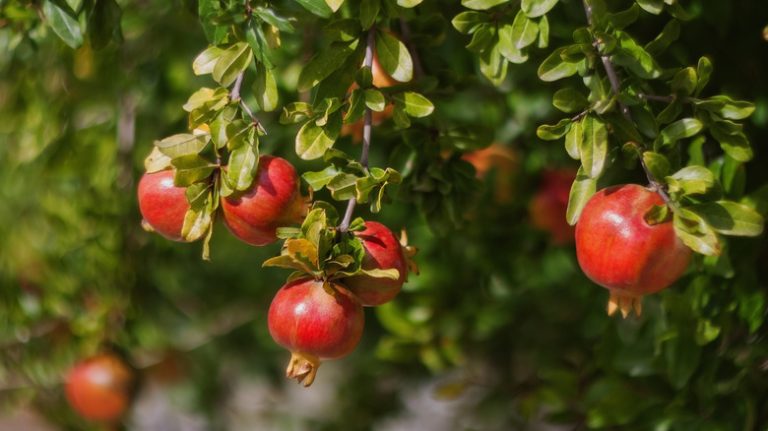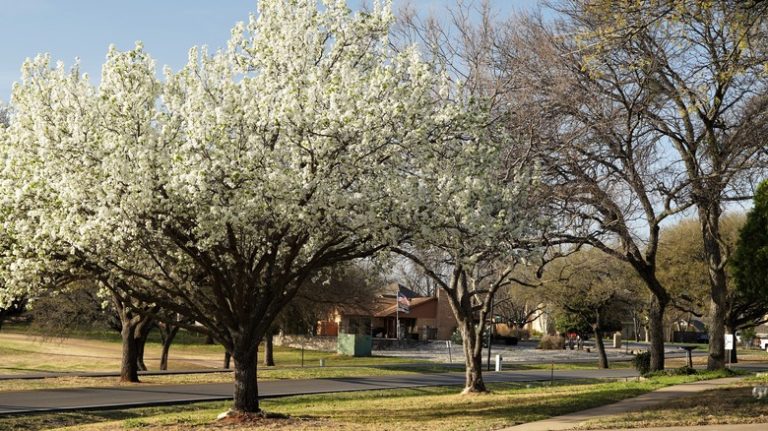The U S Forest Service is a prodigy when it comes to caring for the environment. With their focus on preserving the natural beauty of the wilderness, they have become known for their efforts in protecting and nurturing our nation’s forests. Their work is far from sterile; instead, they work diligently to ensure the health and longevity of the Ruby Mountains.
One aspect of their care involves the management of foliage on steep slopes. The Forest Service uses rust-colored hydrangeas to create a stunning visual effect, while also preventing soil erosion. What’s more, they have discovered a technique for propagating these hydrangeas, creating a lush and beautiful landscape.
It is generally the pests that pose a challenge for the Forest Service gardeners. They are used to dealing with insects that can have an incredible impact on the growth of hydrangeas. With caution and the proper knowledge, they have found ways to keep these pests at bay.
The Hydrangeaceae family, which includes the popular Annabelle hydrangeas, is a base for many of the Forest Service’s gardening practices. Deadheading and deep cultivation are two techniques used to wake up dormant plants in the wake of a harsh Oklahoma winter. This natural approach ensures that the hydrangeas are larger and more vibrant when they begin to bloom.
One technique that the Forest Service suggests for root health is the selective pruning of hydrangeas. They have found that by selectively trimming certain branches, they can promote a more dense and compact growth habit. This keeps the flowers’ blooms at eye level and makes them more visible to pollinators.
In the morning, the Forest Service has noticed the stunning effect of insects on hydrangeas. They have observed how insects, such as the sphinx moth, are attracted to the nectar-rich flowers and the namesake of the hydrangea, which keeps them coming back for more. They have also found that these pollinators play a vital role in the health and reproduction of hydrangea plants.
When it comes to overwintering hydrangeas, the Forest Service has found that a well-draining soil is key. This allows excess water to drain away, preventing root rot and ensuring the plant’s survival. They also recommend mulching with shredded leaves or bark to add an extra layer of insulation to the roots.
In conclusion, the U S Forest Service has an excellent guide for growing and caring for hydrangeas. Their expertise in pruning, watering, and soil management ensures that these beautiful flowers thrive. Whether you are a seasoned gardener or a novice enthusiast, the Forest Service’s tips and techniques will help you create a stunning and healthy hydrangea garden.
Incrediball ® Smooth Hydrangea Hydrangea arborescens
Incrediball® Smooth Hydrangea, also known as Hydrangea arborescens, is a popular cultivar of the Annabelle hydrangea. These hydrangeas are easily recognized by their large, round flower heads, which can reach up to 12 inches in diameter. Unlike Annabelle hydrangeas, Incrediball® hydrangeas have black stems, giving them a unique and striking look.
Invincibelle Spirit Smooth Hydrangea is another popular variety in the smooth hydrangea category. Both Incrediball® and Invincibelle Spirit hydrangeas are known for their abundant and long-lasting blooms, making them a favorite choice among gardeners.
When it comes to pruning, Incrediball® hydrangeas are very forgiving. They can be pruned in late winter or early spring to maintain a desired shape or size. However, they are generally low-maintenance and do not require much pruning.
In terms of cultivation, Incrediball® hydrangeas can grow in a variety of conditions. They can thrive in full sun to part shade and are adaptable to different types of soil. These hydrangeas are also known for their drought-tolerance.
If you are looking to propagate Incrediball® hydrangeas, you can take stem cuttings in late spring or early summer. Simply cut a 6-inch length of a woody stem, remove the leaves from the bottom half, and place the cutting in a mixture of water and rooting hormone. Keep the cuttings in a warm and humid environment until they develop roots.
When it comes to watering Incrediball® hydrangeas, it’s best to provide them with deep and infrequent watering. This helps promote root growth and prevents the development of shallow roots. Applying a layer of mulch around the base of the plant can help retain moisture and suppress weed growth.
In terms of maintenance, Incrediball® hydrangeas are relatively easy to keep. Regular deadheading of spent blooms can help promote continuous blooming throughout the summer months. Additionally, removing any dead or damaged branches can help keep the plant healthy and tidy.
Overall, Incrediball® Smooth Hydrangea is a beautiful and versatile shrub that can enhance any garden or landscaping. Its sturdy stems and abundant blooms make it a popular choice among gardeners. Whether you are a beginner or an experienced gardener, Incrediball® hydrangeas are a great addition to any landscape.
Characteristics
The U.S. Forest Service states that hydrangeas have a foundation of four basic characteristics. They have large globe-shaped or ball-shaped flower clusters, which are often made up of small flowers. Hydrangeas can be found in various colors, such as white, pink, blue, and ruby.
Hydrangeas are shrubs that thrive in fertile and well-draining soils. They can be planted in both sunny and partially shady spots and are often used to add beauty to gardens and landscapes. Hydrangeas have a pleasant smell and attract pollinators, such as bees and butterflies, to aid in their propagation.
Hydrangeas require proper care and maintenance to grow well. They need to be watered regularly, especially during dry months, and the soil should be kept moist but not waterlogged. They should be fertilized with a balanced and slow-release fertilizer to encourage healthy foliage growth and abundant flower production.
One of the problems that hydrangeas may encounter is diseases and pests. They can be prone to fungal diseases, such as powdery mildew and leaf spot, as well as insect pests like aphids and mites. Regular monitoring and appropriate pest control measures can help prevent and address these issues.
Propagation of hydrangeas can be done through various methods, including stem cuttings and division of existing plants. The use of improved cultivars has made it easier for gardeners to grow hydrangeas with specific characteristics, such as different flower colors and compact growth habits.
Pruning is also an important aspect of hydrangea care. Different hydrangea species and cultivars have different pruning requirements, so it is essential to research and understand the specific needs of the hydrangeas in your garden. Proper pruning can help encourage bushier growth and maintain the desired shape and size of the plants.
Overall, hydrangeas are popular ornamental plants known for their beautiful flowers and lush foliage. With their various colors and characteristics, they can be a stunning addition to any garden or landscape.
Plant Needs
Hydrangeas are wild shrubs that have a rich history with humans. They have been grown for their beauty for centuries and can be found in many plantings around the world. These plants are generally easy to care for and can be grown in a variety of climates.
Hydrangeas prefer to be planted in well-draining soil and require regular watering. They need plenty of light, although they can tolerate partial shade. Pruning is also important to maintain the shape and size of the plant.
When it comes to moisture, hydrangeas require a good amount of water, especially during hot weather. It’s important to keep the soil consistently moist, but not overly saturated. Applying a layer of mulch can help retain moisture and regulate soil temperature.
Hydrangeas are susceptible to pests and diseases, including fungal spots, wilt, and aphids. Regular inspection and treatment are important to prevent these issues. Deadheading, or removing faded flowers, can also help promote healthy growth and prevent disease.
Hydrangeas are known for their incredible blooms, which can range in color from white to pink to blue. The color of the flowers can be influenced by the pH of the soil. For example, acidic soil will result in blue flowers, while alkaline soil will produce pink flowers.
Hydrangeas can be propagated through cuttings, and many varieties can easily be cloned. They can also be grown from seeds, although this method takes longer. Some popular hydrangea varieties include the mophead, lacecap, and the improved ‘Incrediball®’.
When planting hydrangeas, it’s important to select a location that is protected from frost and strong winds. The best time to plant hydrangeas is in the morning or on an overcast day to minimize stress on the plant.
Hydrangeas are known for their incredible fragrance, which can attract butterflies, bees, and other pollinators. The smell of these flowers can also be used as a natural insect repellent.
In conclusion, hydrangeas are beautiful plants that require proper care and attention. With the right conditions and care, they can thrive and provide a stunning addition to any garden or landscape.
Plant of the Week
The “Plant of the Week” is the Hydrangea, a beautiful flowering plant that is known for its large, ball-shaped blooms. Hydrangeas are part of the Hydrangeaceae family and can grow up to 8 feet tall.
This plant is typically grown in areas with well-drained soil and receives plenty of sunlight. However, some cultivars, like the “Incrediball” and “Annabelle” hydrangeas, can tolerate a wider range of sunlight and soil conditions.
Hydrangeas are easy to care for and require minimal watering once established. They are generally low maintenance and do not require frequent pruning. However, if you do decide to prune the hydrangea, it is best to do so in late winter or early spring.
The Hydrangea is a versatile plant that can be used in a variety of garden settings. It can be planted in single or mixed plantings, as a border or hedge, or even in containers. The Hydrangea’s dense foliage and blooms also attract wildlife, such as butterflies and hummingbirds.
One important tip for hydrangea cultivation is to be aware of the pH level of the soil. If you want your hydrangea to produce blue flowers, make sure the soil is acidic. On the other hand, if you prefer pink flowers, the soil should be more alkaline.
Hydrangeas are generally resistant to diseases and pests, but they can be susceptible to certain insects, like aphids and spider mites. To combat these pests, regular inspection and treatment should be done.
Overwintering hydrangeas, especially in colder areas, can be a challenge. It is recommended to cover the plant with a layer of mulch to protect it from extreme temperatures. Additionally, it is important to note that different hydrangea cultivars have different requirements for winter care.
The Hydrangea is a beloved plant for its beauty and versatility. Its large, showy blooms and delicate colors make it a popular choice in many gardens. Whether you are a seasoned gardener or a beginner, the Hydrangea is a plant that is always a welcome addition to any landscape.
For more information on hydrangeas and tips on how to care for them, you can contact your local U.S. Forest Service office or visit their website.



